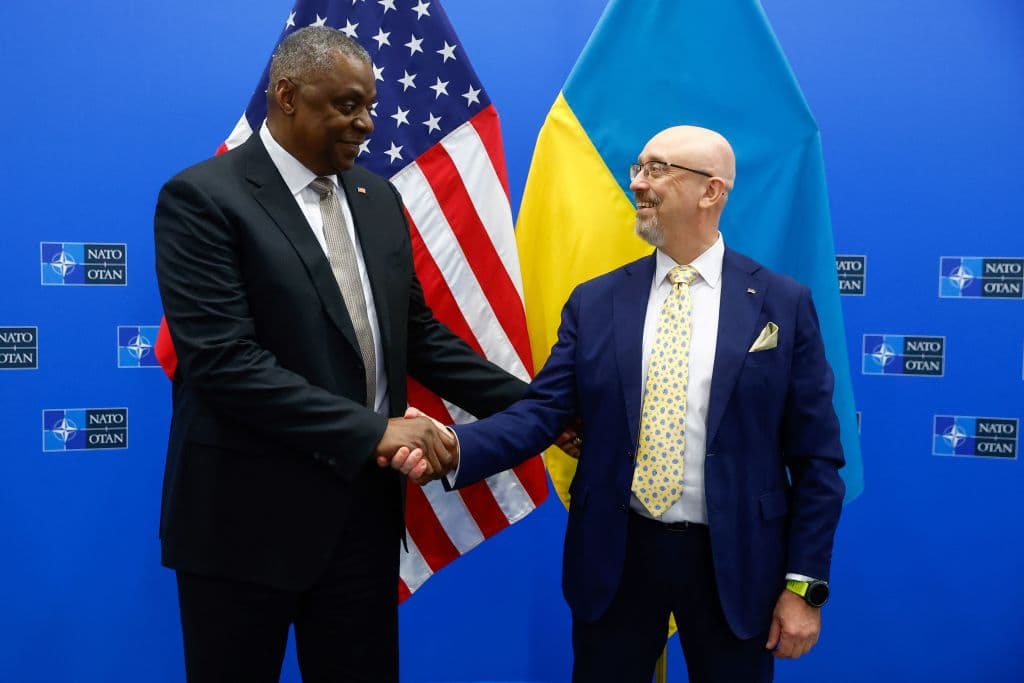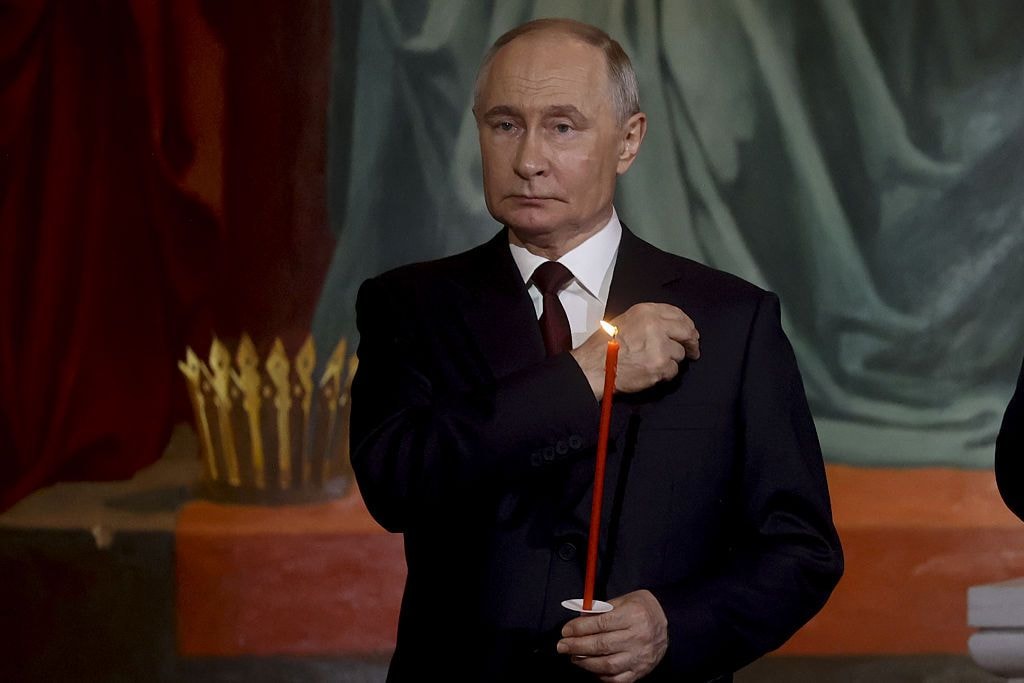Melinda Haring: Ukraine and America – where we feel the impact of the war

Editor’s Note: This guest essay is written within the PEN Ukraine “Dialogues on War” project, supported by the U.S. Embassy in Ukraine. The opinions expressed in the op-ed section are those of the authors and do not purport to reflect the views of the Kyiv Independent.
Europe has changed massively since Russia invaded Ukraine.
I spent some of the summer in Bratislava, Vilnius, and Warsaw, and societal support for Ukrainians is obvious and palpable.
In Vilnius, a sign on a tall skyscraper proclaimed, “Putin, the Hague is waiting for you,” and “Russian warship, go f*uck yourself” was sprayed underneath the underpass of a major bridge, helpfully in Russian.
In Warsaw, chef José Andrés’ World Central Kitchen tent sat outside of the city’s central bus station, hot vats of soup steaming up and volunteers ready to assist new arrivals from Ukraine.
Even in sleepy Bratislava, support for Ukraine amid Russia’s full-scale war was evident. On an ordinary Saturday afternoon in June, Ukrainians gathered in the city’s old quarter to sing Ukraine’s national anthem, while the sandwich board for the Pink Whale Bar alongside the Danube unapologetically banned Nazis, communists, and Russians.
How has Russia’s full-scale war in Ukraine this year been received in the U.S.? The answer isn’t as obvious as it is in Europe, but I can count four ways.
First, support for Ukraine among the American public remains firm.
Recent opinion polls from the Chicago Council on Global Affairs show that the majority of Americans want the U.S. to accept Ukrainian refugees (76%), provide more weapons and military equipment to Kyiv (72%), send financial assistance to the Ukrainian government (71%), and support sanctions against Russia (80%).
Perhaps the polls’ most significant finding is that the majority of Americans say that the U.S. should support Ukraine for “as long as it takes,” even if they will have to pay more at the gas pump and the grocery store as a result.
However, there are deep partisan differences and there’s reason to worry about Republican ranks. Several new Republican candidates for Congress are claiming that assisting Ukraine amounts financially to writing a “useless welfare check.”
Another poll found that the number of Republican voters who think that Washington has done too much for Kyiv has doubled from 13% to 27% from February to May.
Within the Republican Party, an isolationist wing masquerading as foreign policy realism seeks to supplant Reagan’s muscular foreign policy with Donald Trump’s admiration for Vladimir Putin and Viktor Orban.
This view hasn’t won the battle: Senate Minority Leader Mitch McConnell, among others, remains a stalwart supporter of Ukraine. But the days of Reagan in which the Soviet Union’s depredations were decried with moral clarity are gone.
The burgeoning impulse to insist on paving roads in Montana, rather than push to aid Ukrainian refugees and defend core U.S. national interests are pressure points that will confront American voters and politicians in the country’s midterm elections.
Second, Russia’s war against Ukraine has pulled Americans out of our global pandemic obsession and depression. As the Kremlin shelled the Mariupol Drama Theater, killing around 300 people inside, it gave some perspective to many Americans.
Findings from the spring of 2022 show that at least one in four Americans has given money to Ukraine, meaning the number is likely much higher. Kyiv’s successful counteroffensive has put Ukraine back on the media map, ensuring that Ukraine’s brave struggle receives more attention after it waned over the summer.
Third, Washington’s priorities have changed big time.
When U.S. President Joe Biden came to power, his focus was on China, Covid-19, and climate change, not Russia. It’s ironic that such an experienced foreign policy team (Biden was Obama’s point man on Ukraine and made a name for himself for his long-time service with the Senate Foreign Relations Committee) could be so naive.
Current events determine which countries you deal with, not idle fantasies about how the liberal global order works. There’s also little secret that few would utter out loud: Biden’s team preferred woke issues to Eastern Europe.
They see the region as provincial, homophobic—a backwater. In other words, they wanted to stay as far away from it as possible.
In its March 2021 Interim National Security Strategic Guidance, the White House mentioned China 15 times, Russia five times, and Ukraine zero.
The 2022 version mentions Russia 71 times, Ukraine 32 times, and China 55 times. It took a massive war and thousands of casualties to wake up the Biden administration.
It’s a good thing that the U.S.’ priorities have changed, but the Biden administration has learned a lesson that it should have already known. Washington could have responded earlier and more decisively had it not been distracted.
Fourth, Ukraine’s bravery and the David versus Goliath motif we see every day has shown the U.S. what real sacrifice looks like. The daily shelling of cities and towns in Ukraine puts in perspective the relatively smaller tribulations that have roiled American society.
How long will support for Ukraine last in America?
This quote from Biden is spot on: “We are going to stick with Ukraine, and all of the alliance is going to stick with Ukraine as long as it takes to, in fact, make sure that they are not defeated.”










